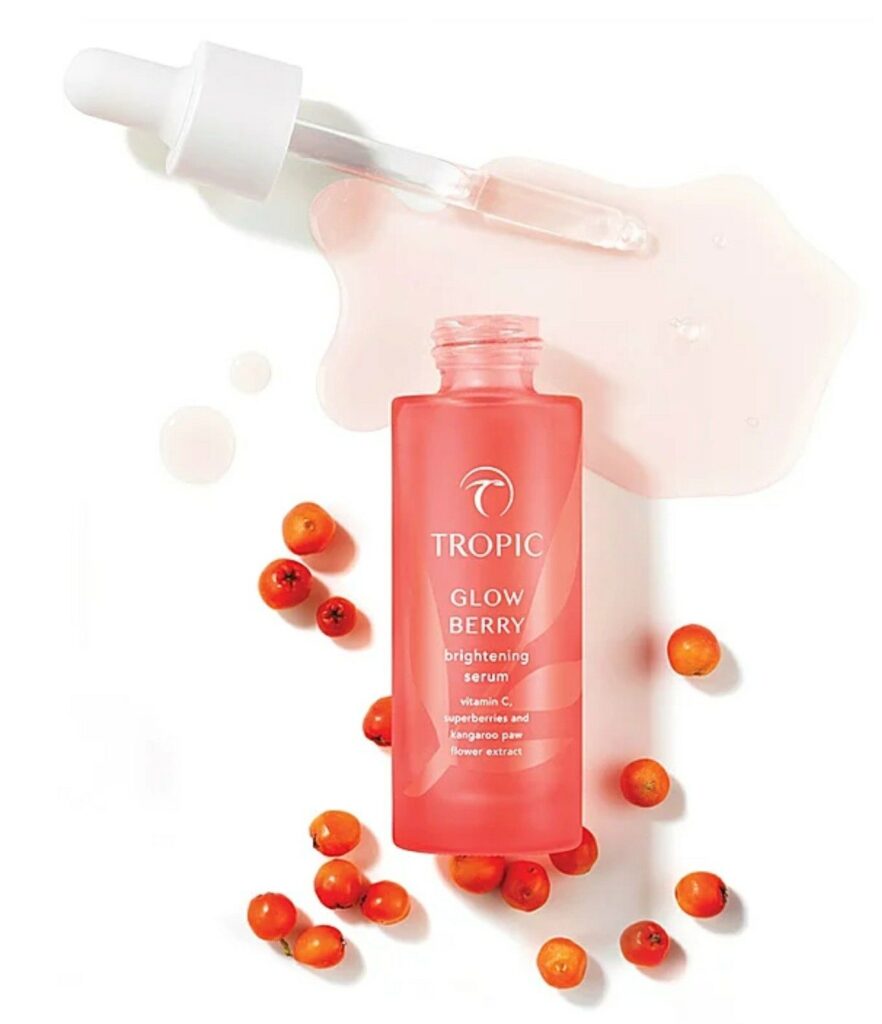A True Skincare Superhero

If you are a skincare geek, then you’ve likely heard of Vitamin C. One of the most exciting, research-proven, and coveted ingredient that you can apply to your skin.
It’s good to have plenty of Vitamin C in your diet, but the best way to improve your skin specifically is to apply it directly! Vitamin C is a powerful antioxidant and provides our first line of defence against damage caused by free radicals (pollution, UV, etc). These pesky molecules break down skin elastin and collagen, and stimulate pigmentation, also known as premature ageing!
Vitamin C has a great safety profile and is generally suitable for all skin types. If you have super sensitive skin try a patch test first. There are no reported adverse effects even with long term use.
So, what does it actually do?
- Evens out skin tone by fading areas of hyper-pigmentation and redness. Great for melasma, age spots and dark circles under the eyes.
- By strengthening barrier function, it prevents skin moisture loss and is hydrating.
- Promotes collagen and elastin formation which increases firmness and elasticity thus reducing fine lines, wrinkles and sagging skin.
- Helps increase cell turnover and assists with healing and repair, thus smoothing out areas of scarring (acne) and inflamed skin.
- Protects against UV damage. The good news is that it doesn’t make skin more vulnerable to run damage, like retinols for example.
So it is a force to be reckoned with by mitigating problems before they occur as well as after. This also includes any pre-cancerous changes. Vitamin C is not a replacement for SPF but think of it as a safety net.
The most researched type of Vitamin C is L-ascorbic- there are others. But here’s what you really need to know- Vitamin C is notoriously unstable and becomes easily oxidised when exposed to air, light and differing pH. If it becomes discoloured or has changed in texture, then it’s probably already ineffective. Concentrated facial serums tend to be more beneficial. Those with concentrations lower than 10% are more preventative but aid in enhancing the impact of other ingredients. Using levels of 10% and above, are best to address existing skincare issues.
Serums should be applied to the face (and even neck, décolletage and back of hands) after cleansing and toning, and before moisturisers, once or even twice a day. You need to be careful when you are applying other types of serums in combination as they can render the Vitamin C ineffective. However, ingredients which can promote Vitamin C activity include ferulic acid and Vitamin E. As with all skincare routines, consistency is key.
If this all sounds a bit confusing, expensive and not worth the bother, then let me introduce you to the new kid on the block, Glycoyl abscorbate. This is a novel, innovative, stable form of encapsulated Vitamin C and is the main ingredients in Tropic Skincare’s award-winning Glow Berry Brightening Serum. Theserum also contains Ferulic acid and other super berries which supercharge the Vitamin C.
The results? After 28 days of daily use, participants had 65% brighter skin; 30% less wrinkles; 20% less dark spots and 19% increased skin elasticity (Independent Clinical Studies). Now that’s my kind of superhero!







